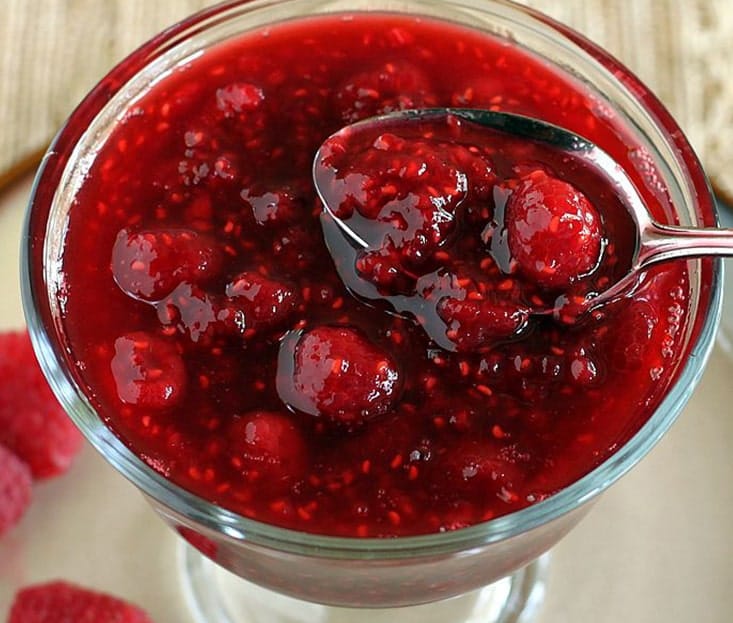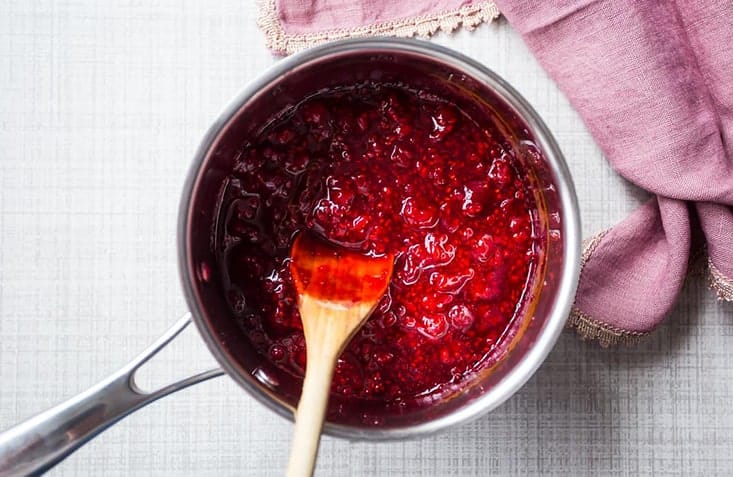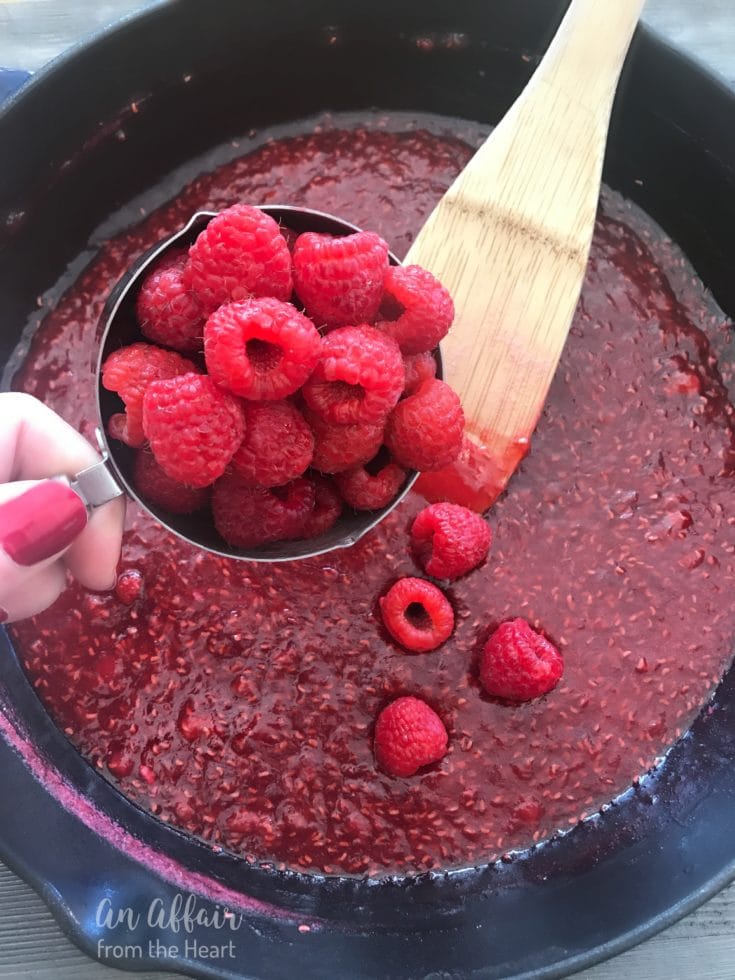
Raspberry Jam
Quick Access :
General information
General
Information :
Information :
Raspberries are traditionally planted in the winter as dormant canes, although planting of tender, plug plants produced by tissue culture has become much more common.Raspberries are vigorous and can be locally invasive. The fruit is harvested when it comes off the receptacle easily and has turned a deep color (red, black, purple, or golden yellow, depending on the species and cultivar). This is when the fruits are ripest and sweetest. The choice of fruit for jam-making is almost endless. we always try to use seasonal fruit to get the best flavor for our jam. Slightly unripe or “just ripe” fruit will form a jam more easily than very ripe fruit as it contains more pectin and is more acidic.

Raspberries are low in calories but high in fiber, vitamins, minerals and antioxidants. They may protect against diabetes, cancer, obesity, arthritis and other conditions and may even provide anti-aging effects. Raspberries are easy to add to your diet and make a tasty addition to breakfast, lunch, dinner or dessert.
Product benefits
Raspberry Jam
Benefits :
- Containing dietary fiber
- Being a rich source of vitamin C
- Being a rich source of manganese (32% DV)
- Having a low-glycemic index food
- Packing With Nutrients
- Reducing Disease Risk
- Balancing blood sugar
- Having Cancer-Fighting Properties
- Improving Arthritis
- Aiding Weight Loss
- Combating Aging
How to Produce
How To
Produce :
Raspberry were processed into jam on an industrialized scale, including the major steps of:
1. Put the raspberries, sugar and lemon juice into a preserving pan or similar.
2. Place pan over a gentle heat, stirring occasionally, until all the sugar crystals have dissolved. You can usually tell by running a wooden spoon over the bottom of the pan.
3. Bring the pan to a rolling boil.
4. Take pan off the heat
5. Place saucer in fridge for about a minute.
6. Test the set by running your finger through the jam, if it forms a crinkle and is jel like then the jam is ready to pot up.
7. Store in a cool dark place and refrigerate once opened
1. Put the raspberries, sugar and lemon juice into a preserving pan or similar.
2. Place pan over a gentle heat, stirring occasionally, until all the sugar crystals have dissolved. You can usually tell by running a wooden spoon over the bottom of the pan.
3. Bring the pan to a rolling boil.
4. Take pan off the heat
5. Place saucer in fridge for about a minute.
6. Test the set by running your finger through the jam, if it forms a crinkle and is jel like then the jam is ready to pot up.
7. Store in a cool dark place and refrigerate once opened


Essentially the principal ingredients used in jam making are simply fruit and sugar. However, depending upon the actual recipe itself, there may be a number of additional ingredients added to the pot, such as spices, ginger and lemon juice (for fruit with little in the way of natural acid). the juice of lemon is needed for very low acid fruit, whereas half of that will be enough for medium acid fruit, and won’t need any for the high acid fruits. In general, fruit with high pectin will also have high acidity and vice versa.
It is always important that any fruit being used as an ingredient should be clean, fresh, in good condition (not rotten, moldy or overripe) and completely dry. If the fruit is damp or wet, then the water may actually dilute the natural pectin and prevent the preserve from achieving a good set.
Boiling is key to jam-making because it releases a long fibrous compound known as pectin. In jam, pectin forms a mesh that traps the sugary liquid and cradles suspended pieces of fruit. Boiling the fruit will always help to purify and sterilize it, killing off any natural yeast and preventing the fermentation process.
Boiling is key to jam-making because it releases a long fibrous compound known as pectin. In jam, pectin forms a mesh that traps the sugary liquid and cradles suspended pieces of fruit. Boiling the fruit will always help to purify and sterilize it, killing off any natural yeast and preventing the fermentation process.

Packaging
Packaging :
As far as packaging is concerned, there are various options – cups, glasses, cans, buckets. We can provide raspberry Jam in each quantity that our client wants, there are no limited in weight and destination or in packed.

